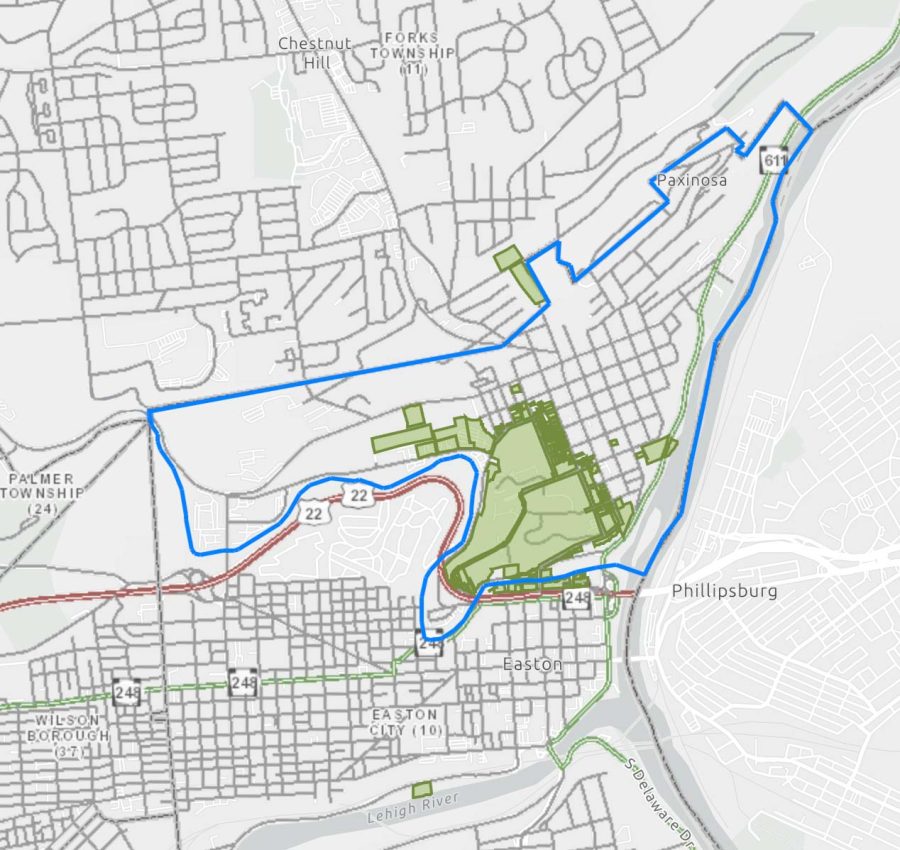While many students choose Lafayette for its small size, few likely know the sheer extent of the school’s reach. The college owns 181 individual plots of land, totaling over $100 million in market value and 363 acres that span several neighborhoods and municipalities.
“The College believes every property owned is important,” Craig Becker, associate vice president for Finance & Business, wrote in an email. “Each serves the College’s mission or its students, faculty, and staff.”
According to Becker, the college owns 120 properties on College Hill, with a cumulative purchase price of $24.7 million, excluding the campus itself. These figures, while used for the college’s financial statements according to generally accepted accounting principles, are added to with each additional property acquisition and not adjusted for inflation; the present market value of the college’s properties on the Hill, excluding campus, is nearly $30 million, according to data obtained from Northampton County. Becker wrote that the values published by the county are “extremely questionable.”
Neither market value nor purchase price is used for taxation purposes, however. Property taxes are determined by the assessed value of the land and buildings on the property – usually around half of the market value, according to an analysis of the City’s properties – then calculated using the property tax rate set by the City of Easton and the Easton Area School District.
The total assessed property value of Lafayette College properties is $53,063,800, but 29 of the college’s properties, including the campus itself, McKelvy House, the president’s house and the Chateau, are tax-exempt, according to publicly available property records. These 29 tax-exempt properties account for roughly 80 percent of the total assessed value – $42,256,200 – leaving only about $10.8 million in taxable property. Assuming it pays the full 9.2 percent property tax on each of its taxable properties, the college expends less than $1 million a year in property taxes, though Becker wrote that the college “elect[s] to pay property taxes on properties off-campus.”
One plot of the college’s land – that which houses the McCartney dorms, Miss Jackson’s and the College Store – has been listed as vacant for the past two years, meaning that the college has not paid taxes on the assessed value of the buildings therein. This is due to a backlog in the Northampton County Assessor’s Office, according to Becker, and a new assessment of the property was completed in September, valuing the buildings at $1,884,800. At the current rates, two years of lost tax revenue amount to $346,000.
At 362.84 acres, Lafayette College’s properties take up roughly twice the area of Manhattan’s Greenwich Village neighborhood. About 125 acres of college property are in the 800-acre College Hill neighborhood itself, meaning that Lafayette owns approximately 17 percent of the neighborhood. Excluding the campus itself, Lafayette owns about six percent of the College Hill neighborhood’s land, with the boundaries of the neighborhood being all land north and east of Bushkill Creek within city limits. A 2018 analysis by the Morning Call showed the college owned 20 percent of properties on the Hill, excluding campus; twelve properties have been purchased since then.
The vast majority of the college’s off-campus property, totaling over 100 mostly single-family homes, is used for residential purposes. These homes are used for both student and faculty housing, the latter being a part of faculty recruitment and retention efforts.
“Properties that are generally rented out to faculty are on the perimeter of campus,” Becker wrote. “They can be found north of campus between Burke and Pierce Streets, east of campus on Cattell and Porter Street, and down to the river with properties on Nevin Terrace. There are also properties used for faculty housing near Metzgar Field and LaFarm.”
Several properties owned by the college are listed as vacant lots. Becker wrote that options for developing these properties, such as 100 Cattell Street, are being explored.
“The Cattell Street plot is zoned for mixed-use [development],” Becker wrote. “The College is looking at several options for the creation of a three-story mixed-use development on the corner of Cattell Street and Clinton Terrace. The ground floor could consist of a commercial space open to the public with residential units above.”
Several other of the college’s lots are used for parking spaces. According to Becker, the need for parking is high at academic institutions, though the McCartney Street parking lot across the street from McKeen Hall is currently being developed into dormitories. Century-old homes once stood on the plot.
College President Nicole Hurd is hosting a community conversation on Oct. 11 from 7 p.m. to 9 p.m. in the Marlo Room. While no agenda is publicly available, a group of College Hill residents called Save College Hill hopes to discuss the college’s expansion and past commitments related to expansion.
Gilad Evans ’24 contributed to reporting.



























































































































